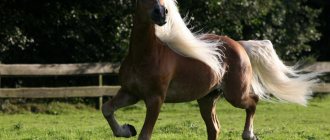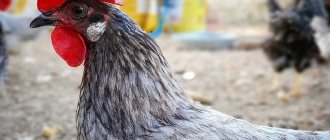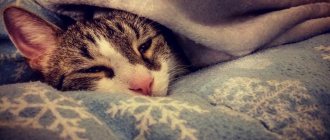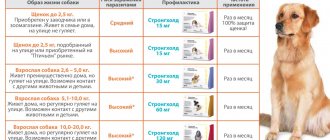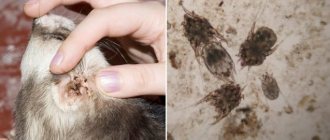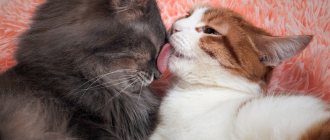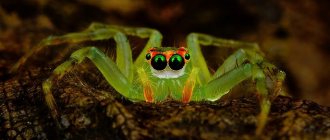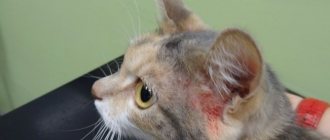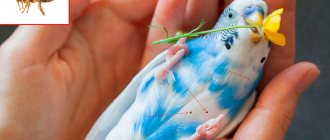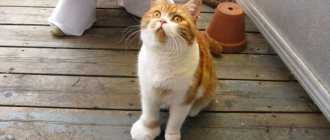It’s no secret to any equestrian that a beautiful hairstyle can ennoble any horse, regardless of the breed. Since ancient times, it has been customary for horses to have their manes and tails braided for the holidays; nowadays, horses’ hairstyles are done for competitions, exhibitions, shows, and simply, if desired, to give the pet an elegant look.
One of the most common competition hairstyles is the bobblehead or rosette hairstyle. It completely opens the horse's neck and looks very elegant, but at the same time this hairstyle is also one of the most labor-intensive. So, be patient and don’t be discouraged if you don’t succeed the first time, as they say, “patience and work...”
Preparation of the workplace
First, we need to prepare to braid your horse's mane. In order for the horse to stand still, it must be tied. It’s a good idea to stock up on food, because the horse will soon get bored of standing in one place and it will start spinning, which can negatively affect the aesthetics of its hairstyle.
Obviously, the place where the horse will stand and you will braid the mane must be sufficiently lit, it is advisable to sweep the floor - it is easier to look for fallen objects on a clean floor. If your horse is tall enough, place a chair. Wear an apron with a pocket - it will be easier to get rubber bands; if you don’t have an apron, it doesn’t matter, just put them next to each other.
Horsehair and its uses
Besides giving your horse a nice haircut, you might be surprised to learn that horsehair can be used in a variety of ways. The amazingly thick and durable horsehair, taken from the mane and tail, can be a great help in our daily lives.
So, what is horsehair used for?
- Tail strings are used for stringed instruments such as violin, viola and cello. In the old days, people used hair from the mane of horses to fill their sofas.
- These days, horsehair is sometimes used as mattress filling.
- Various brushes are made from horsehair. These include hair, paint, teeth and shaving brushes, as well as shoe polish brushes.
- In the 16th century people made wigs from horsehair. In the 18th century, judges wore horsehair wigs in their courtrooms.
- In the 19th century, people used horsehair to create durable fabrics. Some factories still use horsehair to make upholstery.
Preparing the mane
Now let's prepare the mane. If the mane is dirty, it should be washed with shampoo, but not with conditioner, otherwise it will be slippery. You need to comb it thoroughly on one side, trim it and thin it out slightly. Don't get too carried away with thinning your mane. It is advisable to slightly moisten it - this way the strands will not become shaggy.
There are several ways to weave rosettes for a horse; to choose the most suitable method, you need to consider what competitions you are going to. Do not braid the mane too tightly, otherwise it will cause discomfort to your horse, which can negatively affect the course of the competition. If you are traveling close to a performance, you can use rubber bands when weaving; if you have a competition coming up for several days, then it is better to fix the bumps with a thread, a needle and an adhesive plaster. You can additionally fix the mane using a special varnish or sugar water.
A mane from 12 to 15 cm long is considered ideal for rosettes. It's okay if your four-legged friend's mane doesn't fit into this standard.
We divide the mane into equal strands, usually from 11 to 17, and tie ponytails located at equal distances with elastic bands. As you may have guessed, the number of tails will correspond to the number of sockets. Please note that too many rosettes on a horse will look sloppy, and if there are not enough of them, the hairstyle will quickly fall apart. Start at the back of the head and continue down to the withers.
There are several ways to weave rosettes for a horse; to choose the most suitable method, you need to consider what competitions you are going to.
Features of winter keeping horses
In winter, it is advisable to keep horses in a stall - there is enough space, it is easier to clean, and additional partitions between sections will prevent the spread of infection, if any.
In winter, horses have to spend a lot of time in the stable; they need to be carefully prepared for “wintering”:
- provide warmth and good ventilation;
- remove all sharp corners and dangerous objects.
In winter, it is especially important to change the bedding daily - old hay causes respiratory diseases. Features of winter maintenance:
Features of winter maintenance:
- In cold weather, the horse should walk at least 6 hours a week.
- If it gets very cold, the animals are covered with blankets.
- Brushing their fur regularly helps keep the animals warm.
- Food and water are changed every day.
- Hay is added daily, and preferably more often.
If it is impossible to take a walk, you need to entertain the horse with something - you need to give him attention, play, give him a treat. In winter, the diet is adjusted - it is necessary to replenish the energy that the animal spends on warming up
The winter diet must include:
In winter, the diet is adjusted - it is necessary to replenish the energy that the animal spends on warming up. The winter diet must include:
- Hay. There should be a lot of it - unlimited access. A horse should eat whenever it wants to. The food warms you up and entertains you at the same time. It is advisable to add barley or oat straw.
- Fresh vegetables. Every day they give beets and carrots - they are washed and cut into cubes. They give 5-7 kg per day.
- Cereals. They will saturate the body with energy and warm it.
- Vitamins. In winter, be sure to add fish oil and yeast to the feed.
In winter, a horse weighing 500 kg is an average-sized individual and should receive during the day:
- hay – 10-15 kg;
- vegetables – 7 kg;
- grain – 4 kg;
- vitamins;
- three times water – 20-40 l.
Horses need to be given clean water to drink. Its temperature should be 8-15°C. Since the animal eats a lot of dry food, it is advisable to provide it with free access to water. It is also recommended to give water with mineral supplements to replenish energy costs.
Sometimes horses get the winter blues:
- they begin to chew on the stall;
- kicking their hooves;
- swallow air through the larynx.
All this is due to boredom and cramped conditions; the horse has nowhere to splash out his energy. Because of the blues, colic may begin and teeth hurt. How to get rid of the blues:
- increase walking time;
- give more hay;
- bring special toys to the stable;
- tinker with the animal more – petting, combing, talking.
Weaving method using rubber bands
For training, it’s easier to take bright elastic bands, but if you are already preparing for a competition, the elastic bands should match the color of your mane.
Now we braid the first braid. We also start braiding from the top. It is not necessary to braid a regular braid; if you wish, you can braid it in a French braid.
While braiding, pull the braid down and not towards you, so it will immediately lie in the right direction.
We bend the braid inward, under itself, and if the mane is long, then it is better to fold it in half again. We fix the resulting lump with an elastic band or adhesive tape. We continue this way until we have braided the entire mane.
This weaving method is suitable for traveling to “home” competitions. This method is better suited for short manes.
Fashionable men's haircut cascade: ideas 2022
Long strands styled with slight carelessness or with a “dirty hair” effect are one of the most favorite male looks among girls. A cascade haircut is best suited for this hairstyle. The cascade is cut in layers, which gives the hair volume, although it is quite difficult to give the desired shape to the haircut; you must definitely contact an experienced hairdresser.
Thanks to a cascade haircut, you can easily correct the shape of your face, hide flaws and highlight your strengths by playing with hair length and layers. In addition, the cascade is suitable for straight, curly, thick and thin hair.
To complement the styling of long hair, use a special cream, lipstick, gel or wax. A cascade haircut has many styling options.
Weaving method using yarn
For this method you will need:
- strong thread or yarn, for training you can use a bright color, but for competitions, of course, the thread should match the color of the mane
- metal loop - can be made from a hairpin or wire
If the mane is a little dry, wet it again.
We braid the braid, weave it to about the middle and weave a thread into the braid. After the braid is ready, secure its end with woven thread. Then we thread a loop through both ends of the rope/thread. We sew using this loop like a needle - we thread it into the base of the pigtail - it is folded in half (inward) - we should get a braid folded in half with the end of the rope threaded into its own base. After this, we pass through the top of the braid folded in half and thread the rope through the base of the braid. Gently tighten - we get a lump. Now all that remains is to fasten the thread and trim off the excess ends.
Men's haircut and hairstyle Top Knot
The Top Knot haircut was known hundreds of years ago; Japanese warriors wore this haircut to hold their helmet firmly in place during battle. Nowadays the haircut has been slightly modified in accordance with European and American culture.
The Top Knot haircut is suitable for men with round and oval face shapes, but this haircut looks best on straight, thick hair so that there is something to make a bun out of. The minimum hair length for this haircut is 15 centimeters, but for a better effect it is recommended to go longer.
If you are thinking about growing your hair long and want to look cool, this haircut can be a great choice, Top Knot is a definite trend for 2022.
Weaving method using a needle and thread
For this method you will need pieces of thread approximately 25 - 30 cm.
We thread the needle and weave the thread into the braid so that the needle remains dangling at the bottom. It is not recommended to tighten the braid at the base. After you finish braiding the braid, secure the tip with a needle, and bend the tip of the braid inward, with the thread and needle still sticking out of the braid. Now take a needle and thread it through the base of the braid, folding the braid in half. We make a few stitches. If necessary, you can fold the braid in half again. Then we fix the thread and cut it.
Weaving with a needle and thread
So, we have discussed several ways of braiding cone rosettes, we recommend you try them all. However, remember - you need to braid the braids with the same tension - otherwise they will look different. The tighter the socket is, the longer it will last.
How to build a chicken pen with your own hands
When building a pen, the following factors are taken into account:
- Number and age of young animals.
- Material used.
- Safety of chicks.
- Livestock breed, since each variety has its own size and development rate. For example, meat chickens grow faster than egg chickens. At the same time, they are less active and somewhat slow.
When building a run, you need to take into account the number of chickens.
When building a pen, you need to choose durable materials that are resistant to physical impact. This will protect the chickens from predators entering the enclosure. It is also necessary to take into account that there are no protruding nails or sharp parts, as they are dangerous for the chicks.
What you will need for construction:
- 8 wooden boards (4 x 1500 mm, 4 x 1000 mm).
- 4 bars 20 mm thick.
- Screws or self-tapping screws.
- Mesh or durable textiles.
- Slate sheet (this will serve as a roof).
- Hammer and nails (they can be replaced with a construction stapler).
Instructions for building a pen:
- Using self-tapping screws, fasten the boards together. This creates a box that acts as a frame. The bars set the height of the pen.
- Make a board fence on the north side to protect the chicks from drafts and wind.
- Cover the pen on the sunny side with netting. To prevent the fabric or mesh from sagging, stuff it onto a frame of wooden slats.
- The roof of the enclosure is made of mesh and slate sheets. The slate will protect the chicks in bad weather, and the mesh will create a “lace shadow” in sunny weather. Slate is also suitable for making gates.
The frame of the enclosure is made of a block, and the top is covered with fabric or mesh.
You can also set up a mobile enclosure - it can be moved from place to place. The area is calculated as follows: for 30 individuals – 1 m2. Cover the frame with a mesh with 15 x 15 mm cells. In addition, it is necessary to provide a folding door to make it convenient to give food to the birds and change the water in the drinking bowl.
Tips for arranging an enclosure or paddock
When setting up a pen or enclosure for chickens, follow the rules:
It is important that the pen or enclosure for chickens is placed in an area protected from drafts. Otherwise, the chicks may get sick
Watch the kids: if they huddle together and squeak loudly, it means they are cold. Excess sun is harmful to young animals as well as excessive cold, so you need to shade part of the area with a piece of plywood or slate. In hot weather, kids can hide in the shade. You should not release fledgling chicks into the rain and wind, as the chicks will quickly get wet and catch a cold. Under no circumstances leave the enclosure open, even in favorable weather. Birds of prey will instantly notice your mistake and peck the chickens. Such cunning predators as magpies can wait for several days, lying in wait for the moment when the babies are left unattended in an open room.
As you can see, walking chickens in the fresh air is an objective necessity. And you need to take care of the convenience and safety of the birds in advance. A comfortable pen or enclosure will help you keep your livestock strong and healthy.
In the video you can see chickens walking outside in a fenced enclosure.
Frequently Asked Questions About Viking Hairstyles
Are there any secrets to growing long hair?
Hair takes time to grow! The key is to reduce your stress levels by drinking plenty of water and eating a healthy diet. How you treat yourself has a huge impact on how your hair will look. If the body is under stress, hair growth stops.
How to make your beard thicker?
To tame your hair, it is recommended to use a beard comb that is not made of plastic. A wide-tooth comb will separate the hairs perfectly. Start at the bottom of the beard and work your way up and down, this will provide the look of a "fuller" and tougher beard. You can also use beard oil to enhance your look. When it comes to hair products, it's all about personal preference, and experimentation is key.
Care Tips
Can horses swim?
Much attention should be paid to the climate in which the horse develops and lives. In more than half of animals, the reaction to climatic conditions is revealed by the tail and mane. If the climate is dry, the horse will need his mane washed less often than in a humid climate.
After washing and combing your hair, you can apply special shine products to it. You can buy them at veterinary pharmacies. They also sell tail covers. They protect hair from tangling and contamination.
Shiny and beautiful hair on a horse requires a lot of attention and energy. But for a person who breeds horses, this procedure is not tedious. After caring for the horse's coat and hair, the animal will thank its owner with affection and obedience.
0 0 votes
Article rating
